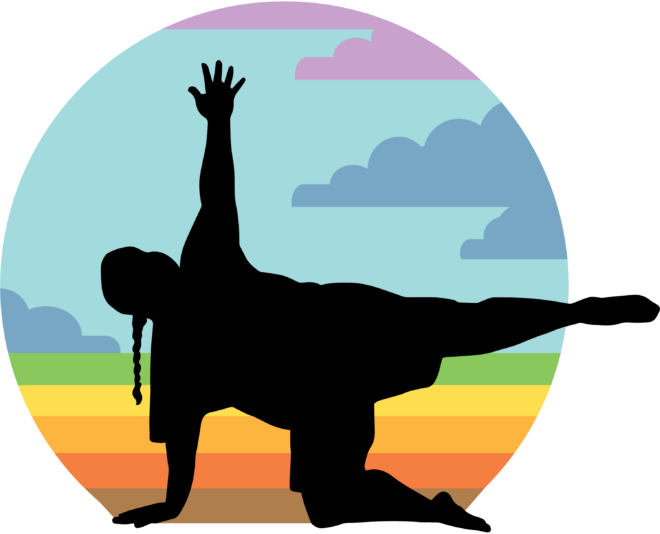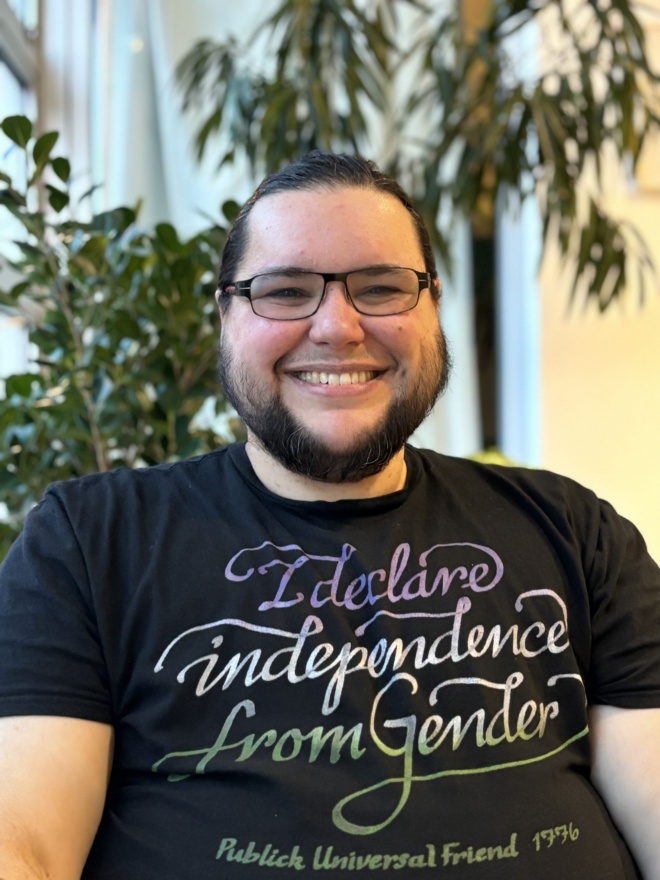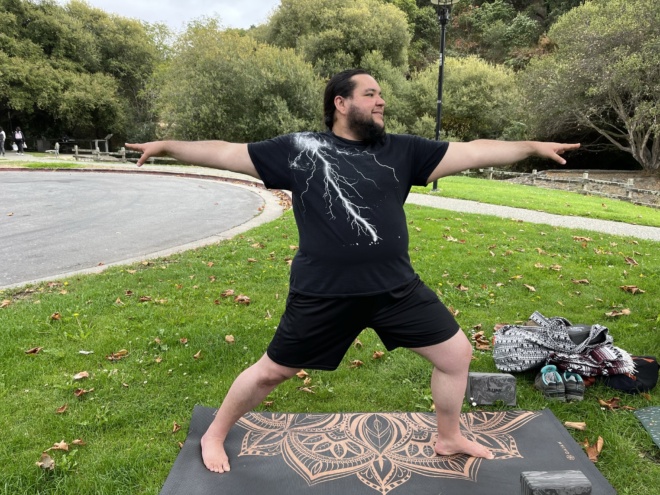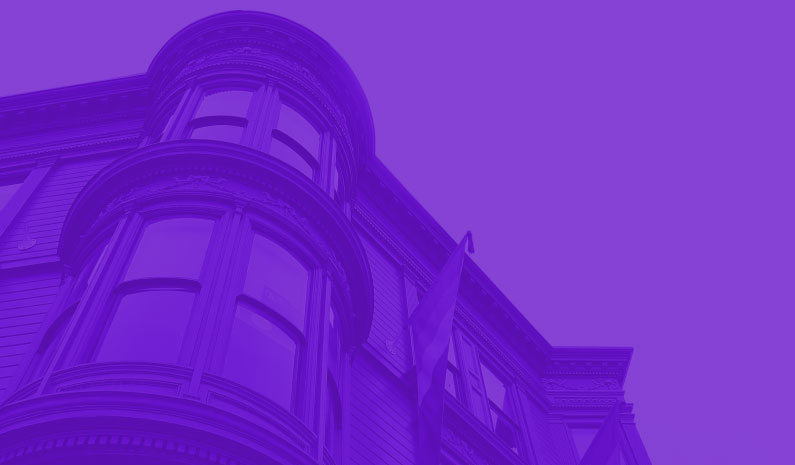
Yoga while Trans*: Finding Steadiness and Ease in the Body
To celebrate our newest 2024 Queer & Well program offering, Yoga while Trans*, led by the founder of Chakra Rainbow Yoga, Adrien Joyner, Adrien shared more about their life and yoga journey, core yoga beliefs, and what folks can expect in our new monthly workshop offerings, meant for all trans, intersex and gender nonconforming folks. In these classes, we will explore yogic tools of breath, movement, and internal focus, which help us spend time in our bodies without spiraling into negative feelings about them.

Yoga while Trans*: Finding Steadiness and Ease in the Body
For as long as I can remember, I’ve had a challenging relationship with my body. I was a fat kid and bullied for it. I was too self-conscious and unmotivated to exercise, no matter how much my parents and doctors pressured me. I especially couldn’t handle any movements that made me hyper-aware of my breasts, like running or aerobics. Yoga is the only physical activity I’ve been able to sustain in the long term.
I started practicing yoga when I was 25, many years before I admitted to myself that I was trans and needed to seek medical transition. My first yoga experience left me discouraged and extremely self-conscious. Every pose felt too difficult, my wrists and ankles couldn’t take my weight, and my balance was awful. I thought yoga was only for thin, fit people who could put on a pair of leggings without being emotionally compromised. I only gave yoga another try because there was a discounted class at a little studio near my house. Designed for people with injuries and disabilities, this class was slow, deliberate, and detail-oriented. The teacher showed us multiple difficulty options for each pose, and I left those classes feeling accomplished and pleasantly noodly. I was hooked.

Photo of Adrien Joyner
I never really examined why yoga worked for me until chronic pain started to take over my life. When I was 29 years old, over several months, I developed spasms and severe pain in my right hip. Eventually, I could only walk about a block at a time. It took years of physical therapy to regain function, mostly because I kept pushing too hard and reinjuring myself. My hip problems forced me to pay attention to my body. Even when I got the pain under control, my increased body awareness meant I couldn’t ignore all the other gendery and non-hip-related ways things felt wrong and awful. I had spent my entire life resenting my body and hoping if I just ignored it, I wouldn’t have to deal with it.
It only occurred to me in my early 30s that when my body did go away, I would be dead. If I wanted to avoid that, I needed to do something to make my body more livable. I chose gender transition over death.
Very soon after I wrapped my head around that, I noticed that my yoga mat was a place where I could tune into my body and feel present in it without the panic that welled up when I tried to, for example, look in a mirror. Over the next several years of my practice, I worked to manage my hip pain long-term, control my anxiety disorder, and cushion myself through the ups and downs of transitioning to a college town in the Midwest. Yoga has been a powerful tool for me in all of these endeavors.
Ultimately, I decided to become the fat, trans, disabled yoga teacher that I want to see in the world so I could bring these techniques to others who need them.
So, what have I learned from my yoga journey?
At its core, yoga is a form of moving meditation. In yoga, meditation, tai chi, or other martial arts, you may have encountered the term ‘mind like monkey’ or the monkey brain. The monkey brain is always busy, grasping frantically at every thought that floats by. The central difficulty of beginning meditation is learning to calm the monkey brain and let go of our racing thoughts.
I struggle to handle the avoidant urge to hyperfocus. By tuning in to the sensual experience of yoga, I can use that hyperfocus to be present in my body instead of ignoring it. In my classes, I ask students to do a lot of noticing. How does it feel to be in this pose? Can you feel the difference when you tilt your pelvis forward or backward? I want my students to observe and interpret their bodies’ feedback. This skill takes practice, and yoga is excellent for training it.
Internal observation combined with a strong focus on alignment helps minimize the risk of injury in my yoga practice. Good alignment also ensures I’m getting the most out of each pose. Alignment and internal awareness help strengthen or release specific muscle groups and train the brain to activate forgotten muscles when needed. Careful attention to alignment on the mat will ultimately build muscle memory that reduces misalignment, pain, and discomfort off the mat.
Another vital element of my yoga practice is giving me a sense of agency over my body. One of the most frightening and frustrating parts of chronic injury and gender dysphoria was a feeling of helplessness. My dysphoric monkey brain insisted that I was trapped forever in this gross flesh sack and that there was nothing I could do about it. But on the yoga mat, I can enter into a give-and-take with my body. I can ask it to do something challenging, like deepen a stretch or hold a pose that takes a lot of strength. Or, I can try that challenging thing, decide it’s too much, and back out of it. I can listen to the feedback my body is giving me and meet its needs – my own – in the present moment.
These are some of the core elements I want to communicate to students in my yoga classes:
- The sensory experience of yoga can help us turn our focus inward and still our busy minds.
- Focusing on alignment helps minimize the risk of injury and maximize the benefit of each pose.
- Noticing what’s happening in your body without judgment can help you determine your physical and emotional needs.
- We can use our agency over our bodies to be gentle with ourselves, to meet our bodies where they are in the present moment instead of trying to force our bodies to fit some arbitrary standard.
Join me for Yoga while Trans*: Finding Steadiness and Ease in the Body on January 16, 6-7:30 PM at the SF LGBT Center. This free, gentle yoga class is intended for all trans, intersex, and genderqueer folks. Beginners welcome! RSVP Here.
Ultimately, I decided to become the fat, trans, disabled yoga teacher that I want to see in the world so I could bring these techniques to others who need them.

Photo of Adrien Joyner, by Rhea Ewing

